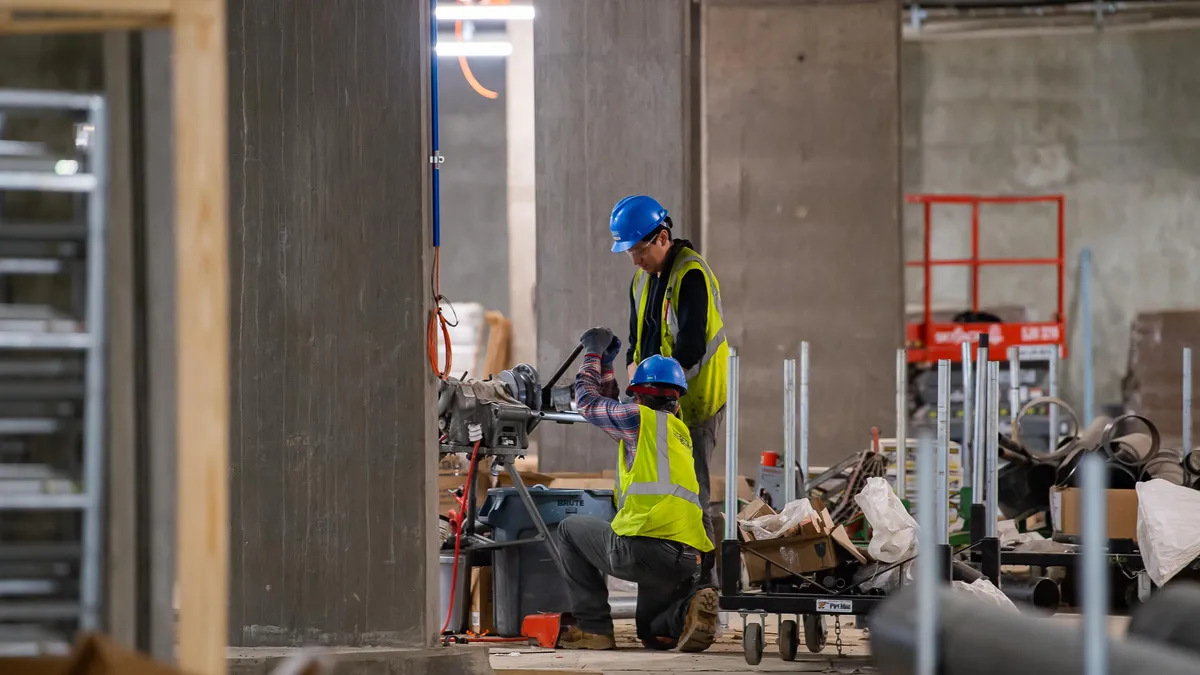Dive Brief:
- Construction backlog in November reached its highest level since the second quarter of 2019, as contractors with under $30 million in revenue landed new jobs faster than expected, according to Associated Builders and Contractors.
- ABC’S Construction Backlog Indicator jumped in November to 9.2 months, a 0.4-month uptick from October and a 0.8-month increase from November 2021, according to the report.
- “The rise in backlog is remarkable and unexpected,” said Anirban Basu, ABC's chief economist. “A number of contractors have been reporting that their backlog has risen rapidly over the past three months, which is counterintuitive given the pervasive view that the broader economy is headed into recession.”
Dive Insight:
The move illustrates the whipsaw cadence of construction since the beginning of the pandemic, when new projects have stumbled to get out of the gate due to supply chain and labor challenges but the demand to build has remained high.
It also marks a U-turn from last month's backlog report, when October numbers showed the largest monthly decline since July 2020 in the commercial and institutional category. At that time, Basu said October's slump indicated an emerging weakness in the nonresidential construction sector.
However, in this month’s reading, the commercial and institutional category, along with healthcare-related construction, led the improvement in backlog, according to ABC.
Given those come-and-go indicators, questions remain whether that positive backlog growth can continue, said Basu.
“While it seems unlikely that backlog will hold up in the face of the Federal Reserve’s efforts to slow demand, many predicted that backlog would have dipped by now and that has yet to transpire,” said Basu. “What’s more, many contractors expect sales and staffing levels to climb over the next six months, while profit margins are projected to remain stable.”
ABC’s Construction Confidence Index reading for profit margins and staffing increased in November, while the reading for sales moved lower. All three readings remain above the threshold of 50, indicating expectations of growth over the next six months, according to the report.















